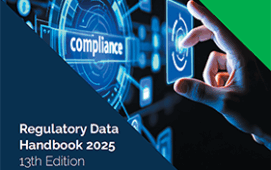Following on from its predecessor’s work last year, the European Securities and Markets Authority (ESMA) is reaching out to credit ratings agencies and the users of ratings to provide feedback on its proposals for endorsement guidelines, which will form the basis for technical standards that will need to be adopted by 7 June this year. To this end, this month it published a call for evidence on the proposed regime under which data from ratings agencies will be endorsed for use. Firms must provide feedback on the subject by 24 January.
Back in 2009, the Committee of European Securities Regulators (CESR) was charged with setting in place a new reporting regime for ratings agencies to provide information on the historical performance of their credit ratings issued to the regulator, which would then be published in a central repository. ESMA will, from 1 July this year, assume responsibility for the supervision of the European ratings agencies and these firms will therefore need to register with the new European level regulator in order to conduct business in the region and for their ratings to be used for regulatory purposes.
Due to the wide scale revisions to the monitoring of these agencies, ESMA is therefore also re-examining the initial guidelines on endorsement and aiming to provide further clarification where necessary. The responses received will then feed into a consultation paper on the future guidelines and ratings firms may face new technical standards that they must meet in order to receive the regulator’s endorsement. The consultation paper also details the transition period before the introduction of the new requirements, during which firms must begin to adopt these new standards.
As part of the endeavour, ESMA is seeking input into its cost-benefit analysis regarding the introduction of these new standards. The paper notes that the new requirements will have a bigger impact in some jurisdictions than others: “ESMA assumes that the regulatory frameworks in a number of jurisdictions would not pass the ‘as stringent as’ test required by the current CESR Guidelines. As a consequence, ratings issued in those countries would no longer be able to be used for regulatory purposes after 7 June 2011, until such time as the frameworks in question change.”
The regulator is seeking to find out how many non-EU ratings are being used by firms on a regular basis and how this data feeds into firms’ capital requirements calculations. All responses to these proposals should be submitted online via ESMA’s website under the section “ESMA Work” heading “Consultation” here. http://www.esma.europa.eu
Subscribe to our newsletter




